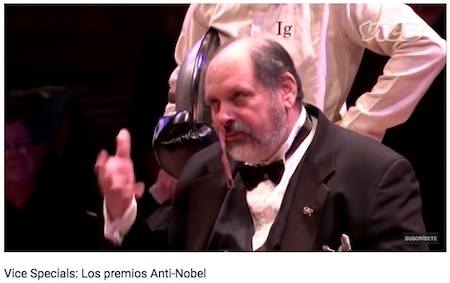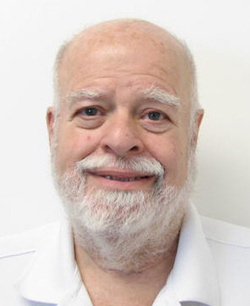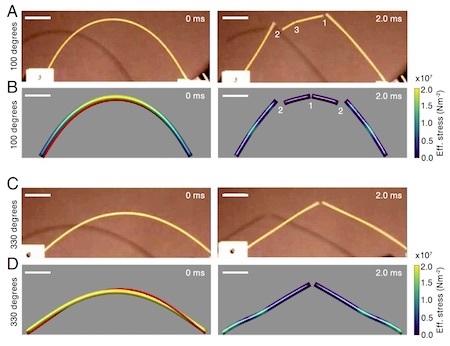Marc Abrahams's Blog, page 174
August 22, 2018
An animated look back at the 2016 Ig Nobel Prize winners
PanSci, in Taiwan, produced this video animation report about the 2016 Ig Nobel Prize winners and that year’s ceremony:

This Year’s Ceremony
The 2018 Ig Nobel Prize ceremony—the 28th First Annual Ig Nobel Prize ceremony—will happen on Thursday evening, September 13, 2018. A limited number of tickets are still available.
And yes, eight-year-old Miss Sweetie Poo will help ensure that all speeches are kept delightfully brief. Here’s a historic video highlights reel of our innovative time-keeping mechanism in action:

August 21, 2018
As the Voice Cracks [research study]
 “Effect of Voice Change on Singing Pitch Accuracy in Young Male Singers,” Elizabeth C. Willis and Dianna T. Kenny, Journal of Interdisciplinary Music Studies, vol. 2, nos. 1 and 2, Spring/Fall 2008, pp. 111-119. (Thanks to Martin Gardiner for bringing this to our attention.) The authors, at the Australian Centre for Applied Research in Music Performance and at Sydney Conservatorium of Music, University of Sydney, report:
“Effect of Voice Change on Singing Pitch Accuracy in Young Male Singers,” Elizabeth C. Willis and Dianna T. Kenny, Journal of Interdisciplinary Music Studies, vol. 2, nos. 1 and 2, Spring/Fall 2008, pp. 111-119. (Thanks to Martin Gardiner for bringing this to our attention.) The authors, at the Australian Centre for Applied Research in Music Performance and at Sydney Conservatorium of Music, University of Sydney, report:
“During the voice-change process, singing for adolescent boys may become more difficult and unpredictable…. Through analysis of 79 recordings of the perfect 4th, perfect 5th and octave sung by adolescent boys (mean age 13y5m), this study investigated singing-pitch accuracy of boys at varying stages of voice change. This study confirmed Cooksey’s finding (2000) that a SFo [descending speaking fundamental frequency] of 196 Hz [g3] is a critical point in voice-change, and that boys undergoing voice-change rely on their SFo as a reference point for pitching in singing. It was found that the perfect 4th was the most accurately sung interval, followed by the perfect 5th. Boys in all stages of voice-change found the octave difficult possibly due to varying vocal range limitations experienced during the changing voice process.”
 Read that and more, in the column “Music and Noise Research—Explorations of artistic and other vibrations” [free, downloadable PDF], in the special NOISE issue of the Annals of Improbable Research.
Read that and more, in the column “Music and Noise Research—Explorations of artistic and other vibrations” [free, downloadable PDF], in the special NOISE issue of the Annals of Improbable Research.
For heaps of improbable research, subscribe to the magazine (or if you like, buy single issues). The magazine has six new issues a year, all in PDF form.

August 20, 2018
Renewed Interest in Octonions
“There are exactly four normed division algebras: the real numbers (R), complex numbers (C), quaternions (H), and octonions (O).
The real numbers are the dependable breadwinner of the family, the complete ordered field we all rely on. The complex numbers are a slightly flashier but still respectable younger brother: not ordered, but algebraically complete. The quaternions, being noncommutative, are the eccentric cousin who is shunned at important family gatherings. But the octonions are the crazy old uncle nobody lets out of the attic: they are nonassociative.” [our hyperlinks]
The quote is from professor John C. Baez (Department of Mathematics University of California) who describes octonions in great detail in his paper for arXiv (2001) entitled : The Octonions.
Since they were first unearthed by John T. Graves and Arthur Cayley in 1843, it might be said that octonions have struggled somewhat to find practical applications. But there are some. For a recent example, see : ‘Novel computer algorithm for cough monitoring based on octonions’ currently in press at Respiratory Physiology & Neurobiology. The authors of the paper have developed :
“a new classification algorithm based on octonions”
which has, they say :
“an ability to deal with large variability of cough sounds and non-cough sounds, as well. Especially because of large variability of cough sounds we decided to use advanced mathematics, sufficiently general, in modeling time-varying data.”
Also see : A recent essay in Quanta magazine which suggests that new findings (about octonions) are fueling an old suspicion that fundamental particles and forces spring from strange eight-part numbers.
Note: The illustration is after Baez (2001), but with all the nodes replaced by onions.

August 19, 2018
The Ig Nobel dream-sequence video of Prof Waz
Prof Waz created a personal reverie—which includes a dream sequence—about the Ig Nobel Prizes:

August 18, 2018
Why Is This Painting Not More Famous?
This painting of George Washington with a horse’s ass is not as widely known and celebrated as other portraits of George Washington painted by the same painter, Gilbert Stuart.

The painting hangs on a wall in Faneuil Hall in Boston, Massachusetts. A copy hangs on a wall in Mechanics Hall, Worcester, Massachusetts. Perhaps other copies hang elsewhere.
The Worcester Telegraph published a photo of the painting in Mechanics Hall, visible next to a projected TV image of the inauguration of a later president, D. Trump, in January 2017:
Non-native English speakers may be unfamiliar with the phrase “horse’s ass”—a phrase that leaps to mind in many native English speakers when they see this painting.

Not a mathematics article: “Quantifying Calculus on Dogs’ Teeth”
“Validation of Quantitative Light-Induced Fluorescence for Quantifying Calculus on Dogs’ Teeth.”
This is not a mathematics study. It is a veterinary medicine study.

August 17, 2018
Vice-en-Español looks at the Ig Nobel Prizes

BONUS: Here’s a look at the Igs by the Japanese TV network NHK:

August 16, 2018
Book-carrying positions – typically “male” or typically “female” – a re-examination
1976 was something of a pivotal year for research aimed at establishing whether men and women tend to carry books in different ways – with no less than 3 key papers appearing in the literature [see references below]. Some seventeen years later however, the subject was re-examined – by Evelyne Thommen, Emiel Reith, and Christiane Steffen at the University of Geneva, who, as a result of a 6-year long study, questioned, or perhaps even challenged, the view that it’s valid to define the various carrying positions as either typically “male” or typically “female.” 
“The present authors conducted five observational studies on carrying behavior in Geneva, Switzerland, over a 6-yr. period. In each sample, almost 50% of women adopted the same positions as men. These results show that it is necessary to question the gender-stereotypical nature of book-carrying positions and to consider gender differences in behavior from a more dynamic standpoint.”
See: Gender-Related Book-Carrying Behavior: A Reexamination in Perception and Motor Skills, Volume: 76 issue: 2, page(s): 355-362 (1993). A full copy may be found here.
1976 references :
Carrying Behavior in Humans: Analysis of Sex Differences, Donald A. Jenni and Mary A. Jenni Source: Science, New Series, Vol. 194, No. 4267 (Nov. 19, 1976), pp. 859-86
The development of sexually dimorphic book carrying behavior Hanaway, T.P. & Burghardt, G.M. Bulletin of the Psychonomic Society (1976) 7: 267.
The effects of sex. book weight and grip strength on book-carrying styles Philip J. Spottswood & Gordon M. Burghardt, Bulletin of the Psychonomic Society 8 (2):150-152 (1976)

August 15, 2018
Is He on the Level? The Master of Complexity.
“Is he on the level?” and “What level?” are two questions you might ask after learning about Dr. Michael Lamport Commons and the 16 levels he invented. The 16 levels are parts and parcels in Dr. Michael Lamport Commons’s “Model of Hierarchical Complexity.” The model rates how complex a person (or a bacterium) is, compared to all other persons (or bacteria).
 Who is Dr. Michael Lamport Commons [pictured here]? He is a “Corresponding Member of the Faculty of Psychiatry Institution, Beth Israel Deaconess Medical Center,” according to the Harvard web site. He is an “Assistant Clinical Professor,” according to Dr. Michael Lamport Commons’s web site.
Who is Dr. Michael Lamport Commons [pictured here]? He is a “Corresponding Member of the Faculty of Psychiatry Institution, Beth Israel Deaconess Medical Center,” according to the Harvard web site. He is an “Assistant Clinical Professor,” according to Dr. Michael Lamport Commons’s web site.
He is many things. He is director of the Dare Association, a place of complexity that subspecializes in undue influence.
He is a fixture in many scholarly journals that you may not have heard of. According to Dr. Michael Lamport Commons’s Wikipedia page, which boasts a warning about veracity:
He is on the governing board of the Journal of Behavior Analysis Online. He is co-editor of the journal Behavioral Development Bulletin and past co-editor of the Journal of Behavior Analysis Online. He was a senior editor of Quantitative Analyses of Behavior, Volumes 1–11 and of four volumes on Adult Development including Beyond Formal Operations: Late Adolescent and Adult Cognitive Development and Clinical Approaches to Adult Development, as well as associate editor for a special issue of Journal of the Experimental Analysis of Behavior on the nature of reinforcement. He is the consulting editor of Moral Development Series.
What is the Model of Hierarchical Complexity? Dr. Michael Lamport Commons explains:
Model of Hierarchical Complexity (MHC)… is a measurement theory that analyzes the developmental difficulty of tasks represented by the Orders of Hierarchical Complexity. It represents the behavioral developmental stages at which an individual is performing while completing a task.
The MHC has 16 levels, Dr. Michael Lamport Commons explains:
It organizes behaviors into orders of complexity ranging from 0-16. The lowest order, order 1, corresponds to automatic responses to a single stimulus, such as taxes in bacteria. Each order above this is composed of two or more lower order behaviors organized into a new structure.
In this exciting action video, Dr. Michael Lamport Commons explains—in a way someone can understand, in theory—his Model of Hierarchical Complexity:
What about Dr. Michael Lamport Commons himself? What level is he on? Could there be a 17th level? These are all questions.

August 13, 2018
Physics Breakthough: Snapping a Spaghetti Strand Into 2 (Not 3!) Pieces
BREAKING NEWS! WITH A SURPRISING TWIST!
Spaghetti—dry spaghetti—again feeds the intellectual fervor of physicists. Five physicists serve up a surprising new study about an old question about bending a strand past its breaking point:
“Controlling Fracture Cascades Through Twisting and Quenching,” Ronald H. Heisser, Vishal P. Patil, Norbert Stoop, Emmanuel Villermaux, and Jörn Dunkel, Proceedings of the National Academy of Sciences, 2018.
The authors, at Cornell University, the Massachusetts Institute of Technology, Université Aix Marseille, and the eCNRS/MIT/AMU Joint Laboratory, build upon an Ig Nobel Physics Prize-winning study [“Fragmentation of Rods by Cascading Cracks: Why Spaghetti Does Not Break in Half,” Basile Audoly and Sebastien Neukirch, Physical Review Letters, vol. 95, no. 9, August 26, 2005, pp. 95505-1 to 95505-1].
Heisser and colleagues describe how—by twisting, as well as bending—they induce a strand of dried spaghetti to break into only two (not more than two!) pieces:
A well-known problem with direct implications for the fracture behavior of elongated brittle objects, such as vaulting poles or long fibers, goes back to the famous physicist Richard Feynman who observed that dry spaghetti almost always breaks into three or more pieces when exposed to large bending stresses. While bending-induced fracture is fairly well understood nowadays, much less is known about the effects of twist. Our experimental and theoretical results demonstrate that twisting enables remarkable fracture control by using the different propagation speeds of twist and bending waves.
(Thanks to Dan Cohen for bringing this to our attention.)
BONUS: Phys.org provides a few additional details, and a photograph of spaghetti.
BONUS: Here’s video of other people’s earlier, mostly unsuccessful attempts—before the twist breakthrough occurred:
BONUS (unrelated): A monograph, by someone else, called “Heisenberg uncertainty principle and the strange physics of spaghetti” meanders into rather different aspects of dry spaghetti. The monograph has an accompanying one-hour-and-22-minutes-long video, which you might enjoy if you enjoy one-hour-and-22-minutes-long videos that meander into rather different aspects of dry spaghetti:

Marc Abrahams's Blog
- Marc Abrahams's profile
- 14 followers





